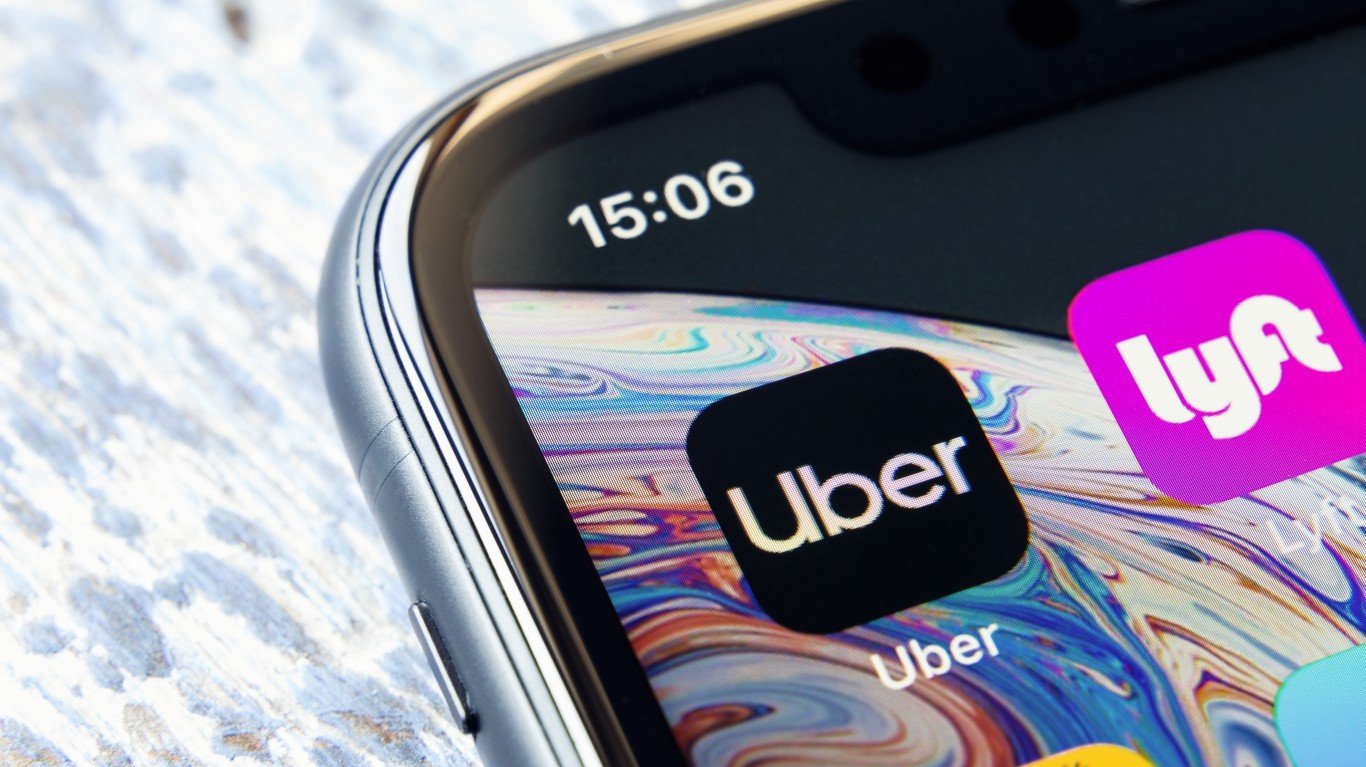

Lyft (NASDAQ: LYFT) and Uber (NYSE: UBER) have been the focus for those looking to play the gig economy since they came public last spring. Although markets may be panicking now at the prospect of the COVID-19 coronavirus spreading, Lyft stock may be an investment vehicle offering great value once the fear wears off.
The current sentiment in the stock market took a turn for the worse last week as the Dow Jones industrial average and S&P 500 each notched losses over 10%, making this the worst week for broad markets since the financial crisis of 2008. Concerns are mounting over the potential pandemic and how it could affect global supply chains.
However, there is good news here for ride-hailing companies, but you have to read between the lines. The initial reaction to COVID-19 is obviously bad, but down the line it could prove profitable for Lyft and Uber. The general public is worried about the transmission for the virus, so ride sharing may offer an avenue for those looking to avoid using public transportation.
Autonomous vehicles offer an interesting play here as well. Even Uber’s food delivery service could prove useful for those looking to stay at home.
While everyone is feeling the initial shock to the market, most likely it will have the biggest impact on companies with global supply chains. The good news for Lyft and Uber is that, as service companies, they have virtually no supply chain, so their stocks may bounce back relatively quickly after the virus scare wears off.
Quarterly Fundamentals
Early in February, Lyft released its most recent quarterly report. While the results seemed like a win on paper, investors were not necessarily pleased and sent shares lower at that time.
A few of the highlights from the report include beating estimates on the bottom line, with the firm posting a net loss of $1.19 per share, compared with Wall Street’s consensus estimate of $1.39. Revenues came in at $1.02 billion, just over the expected $984.2 million.
In terms of the metrics, active riders increased 23% year over year to 22.91 million, up from 18.59 million in the same period of last year. Revenue per active rider was up 23% to $44.40, an increase from $36.02.
Even looking ahead to the first quarter, Lyft expects to see an adjusted EBITDA loss in the range of $140 million to $145 million and revenue between $1.055 billion and $1.060 billion. So, while the path to profitability may not be in the cards for a while, the picture is getting better.
Despite having a seemingly positive fourth quarter, Lyft still took a backseat to Uber’s earnings report though.
The Tale of Two Ride Shares
Lyft’s move on earnings was exactly the opposite of what was seen in rival Uber, even though investors generally consider Lyft to be a more focused company in the ride-hailing business.
What is interesting about the reaction in Lyft is that the analyst community was very mixed about it. Uber’s post-earnings reaction saw analysts pile deep into the stock with more aggressive targets. There is also still some debate out there about what exactly Uber’s “profitability metrics for the fourth quarter of 2020” will really translate to.
Though Uber is still losing money, some of the company’s growth metrics remained very enticing to growth-oriented investors. Gross bookings increased 28% year over year to $18.1 billion, up 30% in constant currency. Monthly Active Platform Consumers increased by 22% to 111 million, up from 91 million.
Uber’s total number of trips increased 28% year over year to 1.91 billion, compared with the same period of last year, when Uber reported 1.49 billion trips. Its adjusted net revenue growth accelerated to 41% year over year, or 43% on a constant currency basis, to $3.73 billion.
So while the metrics are comparable between these two companies, Uber is the clear winner among analysts. However, Lyft offers a somewhat different investing opportunity as a pure-play ride-sharing firm.
Food Delivery
Perhaps the biggest difference between these two firms is that Lyft does not offer a food delivery service. Whether this is a good call is a question yet to be answered. Data for December from Second Measure indicates that DoorDash leads in meal deliveries with a 37% market share. Grubhub Inc. (NYSE: GRUB) is second with a 31% share, and UberEats is third with a 21% share.
However, there are big profitability concerns here. UberEats lost nearly $1 for every $1 it generated in net revenue after paying drivers in the first three quarters of 2019. DoorDash is reportedly on track to lose $750 million in 2019.
Amazon.com Inc. (NASDAQ: AMZN) even closed its Amazon Restaurants meal delivery service because it couldn’t get more than a tiny share of the market.
Sponsored: Want to Retire Early? Here’s a Great First Step
Want retirement to come a few years earlier than you’d planned? Or are you ready to retire now, but want an extra set of eyes on your finances?
Now you can speak with up to 3 financial experts in your area for FREE. By simply clicking here you can begin to match with financial professionals who can help you build your plan to retire early. And the best part? The first conversation with them is free.
Click here to match with up to 3 financial pros who would be excited to help you make financial decisions.
Thank you for reading! Have some feedback for us?
Contact the 24/7 Wall St. editorial team.
 24/7 Wall St.
24/7 Wall St.


